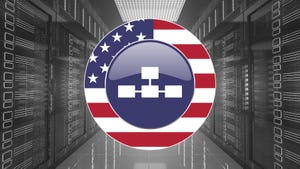Data Center Trends to Watch in 2025: Expert PredictionsData Center Trends to Watch in 2025: Expert Predictions
How AI, sustainability, and edge computing are reshaping data center strategies for the year ahead.

The data center industry in 2025 stands at the crossroads of unprecedented demand and transformative change. From surging AI workloads to a reevaluation of sustainability goals, experts agree that the stakes have never been higher.
This year, the digital infrastructure sector faces a convergence of challenges and opportunities: balancing power constraints with growth ambitions, addressing workforce shortages, and integrating newer technologies like two-phase liquid cooling and virtual twins.
As we enter 2025, data center industry leaders weigh in on the trends, innovations, and strategic shifts that will define the year ahead. From the rise of on-premises AI deployments to the push for diversity in a rapidly evolving industry, these insights offer a roadmap for navigating the challenges and opportunities of the coming year.
AI Will Change the Nature of Data Center Builds in 2025
“What a difference a year makes. Last year, we noted that the exponential growth of demand for AI compute in data centers would force more efficient processes, faster builds and more creative problem-solving to address the persistent shortage of top IT talent, and this has certainly proven to be true – in fact, truer than anyone really expected.
In 2024, the need for more efficient strategies became clear. In 2025, we will see those strategies put into practice.
As AI continues to make inroads in the enterprise space, data centers will be called upon to supply the massive compute required to turn promise into practical business benefits. Like AI, data centers will innovate and adapt to meet changing needs and deliver the optimal solutions that this fast-growing industry needs.”
– Koen ter Linde, SVP and president of connectivity and cable solutions at CommScope
Two-Phase Liquid Cooling Will Break into the Mainstream
“This year, direct-to-chip paved the way for liquid cooling to become the accepted mode of cooling for data centers operating at AI scale. But future chips will significantly exceed today’s thermal performance needs and will thus require drastically stronger cooling capacities.
As chip power densities continue to accelerate in 2025, two-phase liquid cooling will emerge as a key approach to enable data centers to stand up to the immense cooling demands of AI.”
– Nick Schweissguth, director of product and commercial enablement at LiquidStack

Data center sustainability will continue to be a critical focus in 2025 (Image: Alamy)
AI’s Insatiable Demand Meets Sustainability Mandates
“AI seems to have unlimited momentum right now. The orders and contracts we’re receiving are securing power-side solutions for up to three years, with clients even paying upfront to expand our manufacturing capabilities. But there are real headwinds – utility power constraints, GPU shortages, and permitting delays are all slowing down the pace of data center expansion.
We’re seeing sustainability take center stage, too. Many new data center permits now require carbon-free power sources, which is driving interest in nuclear energy, but we’re also seeing some operators deploying natural gas turbines because they need power right away.
The sustainability story is also extending to construction materials. Low-carbon steel and cement, longer server lifecycles, and tools to better measure and decarbonize supply chains are all gaining traction. Scope 3 emissions remain the biggest challenge, as they rely heavily on suppliers’ ability to report accurate and auditable data.”
– Steven Carlini, vice president of innovation and data center at Schneider Electric
Access to Capital Will Remain Critical for AI Data Centers
“As an industry, we all understand the importance of data center infrastructure in supporting continued AI innovation and expansion. The latest and greatest GPU chips need a home, and that is the data center.
In 2025, whether a veteran or new entrant in the market, raising the necessary capital to design, develop, and operate AI-ready data centers will remain critical to meeting the next phase of growth, especially as requirements continue to get larger and denser.
A challenge for new entrants will be to ensure that investors have sufficient confidence in a platform’s track record to provide the necessary capital to guarantee certainty of delivery and execution, not to mention ongoing operations.”
– Tom Traugott, SVP of strategy at EdgeCore Digital Infrastructure

Data center construction continues to evolve, with new designs and technologies shaping the industry's future in 2025
Collaboration Is Needed More Than Ever
“Construction faces a double-edged sword. It must meet massive demand despite the many structural barriers preventing growth and limiting output – such as an aging, shrinking workforce and industry fragmentation.
Largely due to this fragmentation, new technologies and the data revolution have had a far more limited impact on construction than other sectors – with many construction sites looking very similar to those a century ago. A lack of venture capital investment into construction tech is both a cause and subsequent effect of this issue.
Industry collaboration between the big industry players and tech startups is needed more than ever to help scale the disruptive technologies being created and get them to market. The industry stands to see huge gains in productivity, efficiency and output.”
– Chris Stern, managing director of Trimble Ventures
Massive Edge Computing Investments
“As companies continue to increasingly invest in their total amount of edge sites in 2025, the needs at the edge will continue to evolve and grow. We’re still in the early days of deploying robotics and autonomy on the jobsite, however the investment in these capabilities is not slowing down.
As much as $378 billion is projected to be invested in edge computing by 2028, according to the IDC. With this, massive investments are coming down the pipeline and this kind of AI and autonomous work will serve to keep humans safe from dangerous tasks while helping companies grow revenue with faster production at-scale.”
– Dan Wright, CEO and co-founder of edge AI startup, Armada
Streamlining the Regulatory Process
“The rise of power requirements is an area of concern for both consumers and data center operators alike. This is certainly recognized at the federal level with a Department of Energy program announced in August to target providing an additional 13 GW of capacity to support demand from multiple sources including datacenters.
Also part of that effort is improving grid resiliency from extreme events. One of the challenges faced in these infrastructure improvements is the regulatory processes required to approve the projects can take extended timeframes. The DOE also began a program in 2024 to streamline permitting certain larger projects to condense that timeline to 24 months.”
– David Beach, datacom market segment manager, Anderson Power
Increased On-Premises AI Deployments
“As AI continues to grow, there will be rise in on-premises AI deployments and hybrid cloud models. Companies will increasingly need to find the right balance between hyperscale, enterprise and edge data centers by assessing workload-specific demands. Hyperscale data centers will continue to power large-scale data processing and storage, while enterprise and edge data centers will be essential for data privacy, latency-sensitive, real-time applications.”
– Amit Sanyal, senior director of data center product marketing at Juniper Networks
Private 5G Network Expansion
“Private network adoption will significantly accelerate in 2025, with the market projected to reach $6.4 billion by 2026. Standalone private 5G networks are expected to capture 40% ($2.8bn) of investments, while the Shared Rural Network extends 4G coverage to 95% of UK landmass.
As a result, we will see businesses increasingly adopt private 5G networks for secure, high-performance communication, specifically in industries like manufacturing, healthcare, education, and smart cities, which will leverage private 5G networks for secure automation and real-time operations.”
– Sandeep Raithatha, head of strategy, innovation, and 5G IoT products at Virgin Media O2 Business
Virtual Twins Will Help Reduce Data Center Energy Consumption
“In 2025, we may not completely solve the problem of energy consumption challenges of data centers, but we will significantly reduce their impact. For instance, an effective strategy is to take a holistic approach to optimizing the energy consumption of cooling systems and IT, which together account for 80% of total energy use, by leveraging virtual twins – a solution with the potential to be revolutionary.
These virtual models can simulate computer workloads and their impact on energy consumption, heat generation, airflow cooling, and the combination of water cooling systems – direct liquid cooling. This approach can reduce server consumption by up to 10%, along with cooling consumption by 30%, resulting in significant savings on energy bills.”
– Jean-Marc Gaufres, industry solution experience director at Dassault Systèmes
Tackling the Storage Shortage Crisis
“The world is creating data at unprecedented volumes. In 2028, as many as 400 zettabytes will be generated, with a compound annual growth rate (CAGR) of 24%. As AI matures and scales, the value of data will increase, leading us to store more data for longer. However, the storage install base is forecasted to have a 17% CAGR – a significantly slower pace than the growth in data generated. And it takes a whole year to build a hard drive.
This disparity in growth rates will disrupt the global storage supply and demand equilibrium. As organizations become less experimental and more strategic in the use of AI, they will need to build long-term capacity plans to ensure storage supply, and fully monetize investments in AI infrastructure.”
– BS Tej, executive vice president and chief commercial officer at Seagate
AI Factories Become Table Stakes
“AI use cases in the financial services industry are exploding. This includes improving identity verification for anti-money laundering and know-your-customer regulations, reducing false positives for transaction fraud and generating new trading strategies to improve market returns. AI also is automating document management, reducing funding cycles to help consumers and businesses on their financial journeys.
To capitalize on opportunities like these, financial institutions will build AI factories that use full-stack accelerated computing to maximize performance and utilization to build AI-enabled applications that serve hundreds, if not thousands, of use cases – helping set themselves apart from the competition.”
– Kevin Levitt, global director of financial services, Nvidia
Balancing AI Growth and Sustainability
“In 2025, data centers will face mounting pressure to reconcile AI’s surging energy requirements with strict sustainability goals, sparking an industry-wide rethink on AI applications. The infrastructure required to deliver on AI is poised to drive a 160% increase in data center power demand. This challenge is creating a pivotal moment for data centers to support high-density compute loads while advancing their environmental commitments.
Tools like digital twins will be essential for data centers to meet AI goals sustainably, allowing operators to proactively manage power, integrate renewable sources, and optimize cooling measures to meet AI’s GPU usage demands. With these advancements, data centers can help organizations make AI investments both impactful and environmentally responsible.”
– Mark Fenton, product engineering director at Cadence
The Data Center Industry Will No Longer be an ‘Old Boy’s Club’ in 2025
“AtNorth hopes that 2025 will be the year that the data center industry – traditionally male dominated – will increasingly recognize the importance of diversity in inspiring creativity and innovation.
With the speed that the industry is growing it is not surprising that there is a significant skills gap to be addressed. Whilst most businesses tend to hire within their own ‘gene pool’, it is essential to actively source talent with different skills if the industry is to evolve.”
– Fredrik Jansson, atNorth chief strategy and marketing officer
About the Author
You May Also Like









